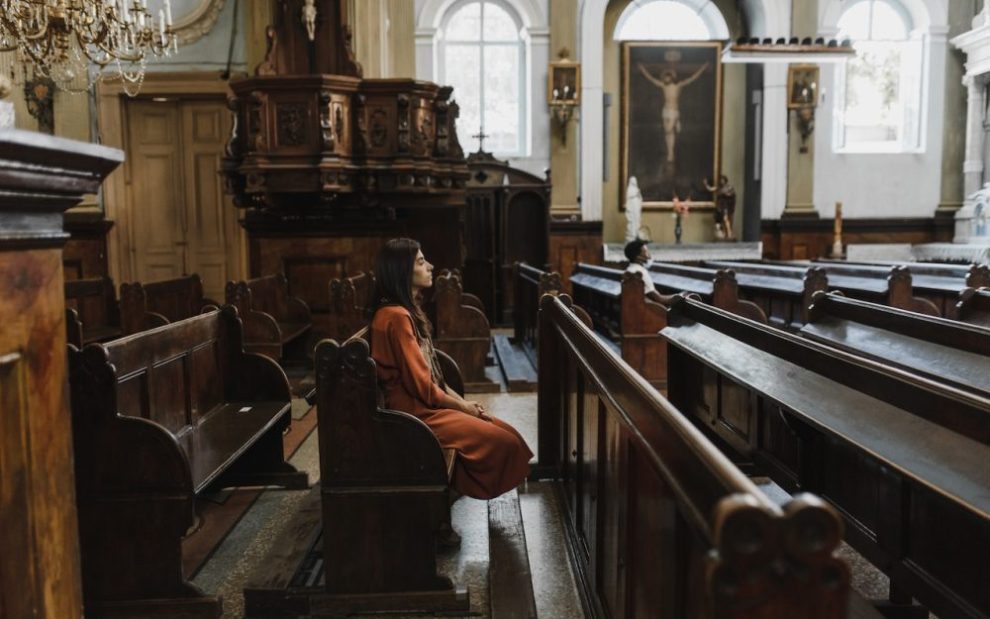The following is an excerpt from Just Church: Catholic Social Teaching, Synodality, and Women by Phyllis Zagano (Paulist Press, 2023).
It can seem simplistic to say that the life and dignity of people within the Church begins with baptism and must be respected. But when the Church makes statements that imply or directly state that women cannot image Christ, the Risen Lord, there is much to be criticized.
While it may seem incomprehensible in current times to say that women cannot—do not—image Christ, this is the bedrock of the argument that women cannot receive sacramental ordination. The implications of this statement or belief are enormous. Its errors are equally enormous.
To begin with, men and women are ontologically equal. That is, all human beings, all persons, are equal before God. Because they are equal—male and female—one cannot be subordinated to the other. While history is rife with heretical statements of ontological subordination, their existence and expulsion from Church teaching supports the essential point that men and women, while not the same, are equal.
Even so, there is significant writing that allows for ontological equality while also admitting hierarchical subordination. Can we admit that societal norms influenced the patristic writers who allowed that wives ought to submit to their husbands? John Chrysostom writes, “Let us take as our fundamental position then that the husband occupies the place of the ‘head’ and the wife the place of the ‘body’” (Homily XX on Ephesians). Can we allow that he and other Church fathers who found the support for the subordination of women in the writings of Saint Paul were unable to discard the incomplete anthropology of Paul’s own time (see Eph 5:22–32)?
That is, the ordinary subordination within relationships (mother-son, employer-employee, bishop-presbyter) can transfer to a distorted view of the human person, such that the woman is always considered subordinate to the man, independent of the circumstances of their relationship(s).
To be clear, there is a need for “subordination” in any organization, at least on the managerial level. And there must be an accommodation within families such that decisions can be made. But the ordinary ways of relating that include subordination need not, in fact, cannot deny the full humanity of any individual. That is, in all situations, women are not automatically subordinate to men, and women are specifically not automatically subordinate to men based on some notion of their lesser humanity.
We cannot forget that “God created humankind in his image… male and female he created them” (Gen 1:27). The imago dei implies, in fact, requires, a single-nature anthropology that recognizes male and female persons existing equally. Even canon law allows for this fact with the first canon in the section describing the rights and duties of the Christian faithful:
From their rebirth in Christ, there exists among all the Christian faithful a true equality regarding dignity and action by which they all cooperate in the building up of the Body of Christ according to each one’s own condition and function. (Can. 208)
Unfortunately, some might consider “one’s own condition and function” as an opening to admitting a dual nature anthropology, but examinations of this and earlier canons (specifically, canon 204) clearly indicate that one’s “condition” implies one’s relationship to the Church, as baptized or not, as in communion with the Catholic Church or not, as cleric or lay, secular or religious. One’s “condition” does not and cannot imply male or female gender. Canon 208, rooted as it is in Lumen Gentium, the Second Vatican Council’s Dogmatic Constitution on the Church (November 21, 1964), supports single-nature anthropology. Lumen Gentium clarifies and expands the concept of equality of the sexes:
By divine institution Holy Church is ordered and governed with a wonderful diversity. “For just as in one body we have many members, yet all the members have not the same function, so we, the many, are one body in Christ, but severally members one of another.” Therefore, the chosen People of God is one: “one Lord, one faith, one baptism”; sharing a common dignity as members from their regeneration in Christ, having the same filial grace and the same vocation to perfection; possessing in common one salvation, one hope and one undivided charity. There is, therefore, in Christ and in the Church no inequality on the basis of race or nationality, social condition or sex, because “there is neither Jew nor Greek: there is neither bond nor free: there is neither male nor female. For you are all ‘one’ in Christ Jesus.”
Certainly, all can agree that “all the members have not the same function.” Such would be a destruction of society and especially of the society of Church. But, equally so, “in the Church no inequality on the basis of race or nationality, social condition or sex….” As Lumen Gentium points out, restrictions to equal humanity cannot be based on “male nor female.”
The Church preaches these facts, but does the Church present them adequately to the world? Evangelization is both an internal and external task, and if the Church cannot overcome the perception that it somehow certifies an inequality in the humanness of women in relation to men, evangelization will continue to suffer.
Image: Pexels/Arina Krasnikova











Add comment